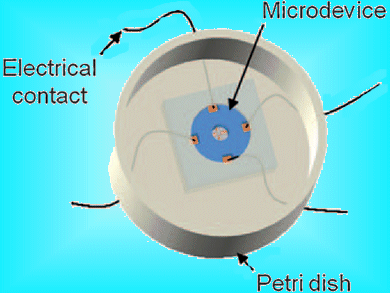Vesicles are bubbles made of lipid membranes that can store, transport, or digest cellular products and waste. Compounds stored in vesicles are transfered into the extracellular medium by fusion of the vesicle membrane to the cell membrane. This process is poorly understood at the single-vesicle level. Several analytical techniques can be applied, but optical techniques lack time resolution, while electrical techniques cannot track events prior to fusion.
Christian Amatore and co-workers, Ecole Normale Supérieure, Paris, France, have combined optical and electrical measurements in a single device. They use glass electrodes coated with indium tin oxide which allow simultaneous total internal reflection fluorescence microscopy and amperometric measurements. The device was demonstrated with serotonin secreting cells, where the secretory process of a single vesicle could be followed.
This is the first step towards fully explaining the role of vesicles in the body.
- Coupling Amperometry and Total Internal Reflection Fluorescence Microscopy at ITO Surfaces for Monitoring Exocytosis of Single Vesicles
A. Meunier, O. Jouannot, R. Fulcrand, I. Fanget, M. Bretou et al.,
Angew. Chem. Int. Ed. 2011.
DOI: 10.1002/anie.201101148




